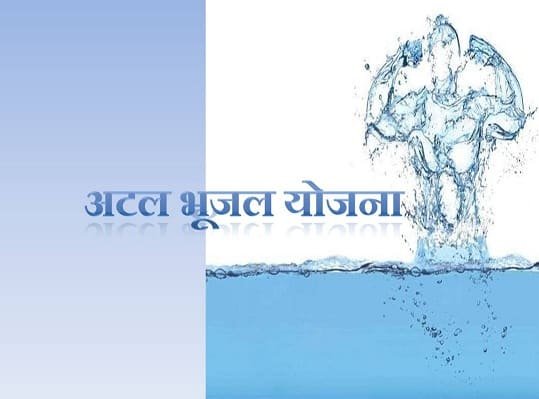Atal Bhujal Yojana 2019- 2020 Details Ministry, UPSC, Starting Date
The Atal Bhujal Yojana has been initiated by Central Government that shall help address the conditions of water bodies in our country. The World Bank will fund the scheme. The main motive of the scheme is to improve the groundwater management system and also maintain it as a sustainable resource. The scheme will be operational for five years from 2018-2019 and ending by 2023. The following part of the article shall take you through other relevant details of the entitled scheme.

| Name of the scheme | AtulBhujal Yojana |
| Fund sponsored for the scheme | Rupees 6000 crores |
| Scheme to be implemented by | Ministry of Jal Shakti |
| Main objective of the scheme | Improve groundwater management |
| Target area of the scheme | Over-exploited and water-stressed areas of India |
| Contribution for the scheme | Equal contribution will be done by the government of India and World Bank |
What are the highlighting features of the scheme?
- Main objective of the scheme – The main aim of the scheme is the betterment of the condition of groundwater management in different areas of India.
- Areas included in the scheme – The areas to be benefitted under the scheme include Karnataka, Maharashtra, Rajasthan, Haryana and Uttar Pradesh. The states are included as these are among the critical and highly exploited in the conditions of groundwater.
- Funds given by the government – The World Bank will fund the above-said scheme that shall help in improving the condition of water management in different parts of India. Therefore, it is known that for successful implementation of the scheme, a total of rupees 6000 crores will be given by the central government.
- Benefits given to Beneficiaries- The beneficiaries of the scheme will be able to use the groundwater of Ganges as stated in the policies of the scheme.
What are the expected results of the scheme?
- After successful implementation of the scheme, it can be expected to get positive results such as a better understanding of the water regime.
- It also results in an integrated and focused approach for addressing the issues relating to the lower level of groundwater.
- It also relates to the sustainable management of groundwater through different schemes and adoption of different practices. This shall help reduce depletion of groundwater for different uses such as irrigation and others.
Which is the priority area of the scheme?
- In the list of priority areas, states like Gujarat, Madhya Pradesh, Karnataka, Haryana, Uttar Pradesh and Rajasthan are included.
- The states are almost 25% of the total amount of groundwater that is exploited in India in the critical and semi-critical blocks.
- The scheme shall cover-up for two types of the groundwater system, and it includes hard rock and alluvial aquifers.
Community Participation in the scheme
The scheme wants to involve the communities in activities like circulating groundwater, observing the groundwater, forming water user association, allocation of budget and the like.
The community will help in pursuing and successful implementation of security plans under each Gram Panchayat. These will actively take part in IEC activities that have been connected for suitable improvement of groundwater management.
The motive behind involving the community is the betterment of the water management process. It shall also help in the implementation of similar government initiatives for the betterment of society.
Background of the scheme
The current status of groundwater is deteriorating on account of unstable groundwater development and over-use. As per the report of Central Ground Water Board, out of a total of 6,607 administrative units, only 1,071 units are included in groundwater exploitation, 697 units are semi-critical, 217 units are critical including 4,530 safe units. Also, 92 units contain saline water. In this relation, it is seen that the number of over-used and critical units are higher in Delhi, Uttar Pradesh, Punjab, Himachal Pradesh, Haryana, Rajasthan, Karnataka and Tamil Nadu. The list also includes the Union Territories of Daman and Diu Puducherry. As a result of declining groundwater levels, there has been lowering water levels in the wells or deepening of extraction structures. This dangerous condition was an additional burden for the farmers.
Other Schemes